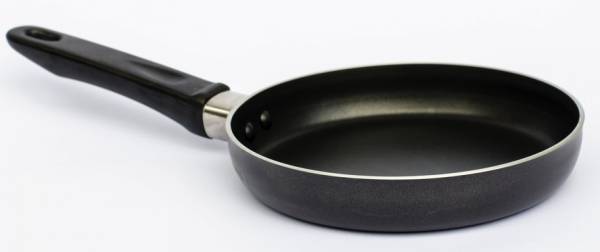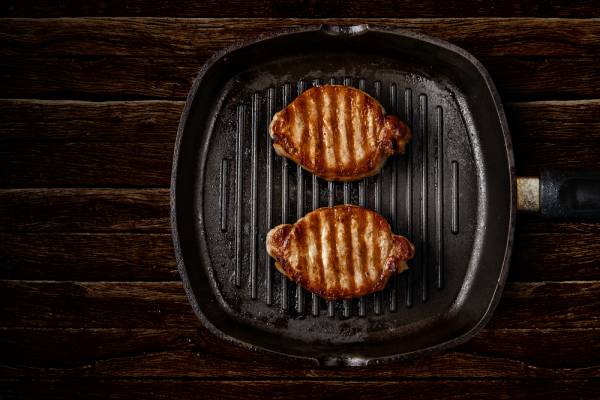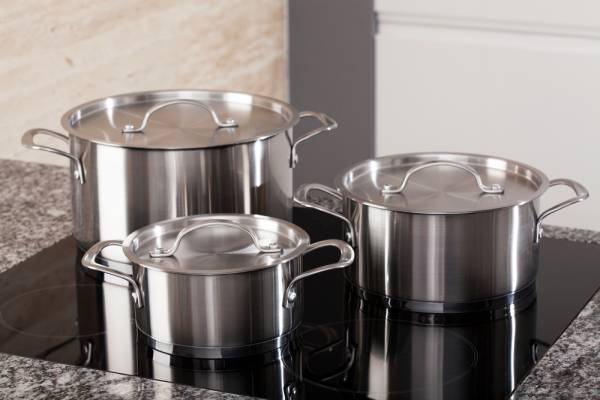Whether you are just embarking on a new diet plan or are a seasoned veteran, convenience is a huge part of success. Most of us are busy with other things besides training and eating.
READ: Eating Clean on the Go: It’s All in the Planning
For the most part, cooking our own food is the best way to go. Cooking also happens to be one of the biggest roadblocks to achieving your goals.
Back to Basics
Years ago when I would first meet a client I was quick to talk about calories, macronutrients, meal plans, habit change, goals, food journals, and lifting heavy. All of these things have their place in helping people make better choices. But sometimes it didn’t seem to get people to change a thing.
“I was asking people to do meal prepping and lots of cooking. But it’s hard to cook if you don’t have the tools to do it.”
What I realized is that I was skipping past the first step. When you call tech support about a broken item, the first thing they usually ask is, “Is it plugged in?” While this may frustrate most of us, it is obviously asked because some people skipped that step.
RELATED: Lose Weight With Smaller Plates
I was asking people to do meal prepping and lots of cooking. But it’s hard to cook if you don’t have the tools to do it. Having the proper cookware is the first step in making food preparation a habit, and efficiency, ease of cleaning, cost, and health can all impact your purchasing decisions. Let’s take a look at what cookware you should have in your kitchen to be successful.
Non-stick Pans
Non-stick pans, commonly referred to as Teflon, are a popular choice. Teflon is a brand name for polytetrafluoroethylene (PTFE), which was invented by the DuPont Company. They began using it for cookware in the 1940s. Its popularity is at the root of business: it filled a need. Having a non-stick coating saved people time and energy. It also appeared healthier. As the low-fat craze swept the nation, Teflon products allowed for cooking with less butter or oil to coat the pan.
“Having the proper cookware is the first step in making food preparation a habit, and efficiency, ease of cleaning, cost, and health can all impact your purchasing decisions.”
While Teflon is the most convenient option, it comes with safety concerns. Many of us believe scraping the surface of the non-stick material is the biggest hazard. This isn’t true. The biggest chemical exposure comes from fumes due to high heat.
A well-documented condition is called polymer fume fever and is caused from respiratory exposure to these chemicals. It is similar to a rough case of the flu. It is so potent that it is known to kill pet bird in people’s homes. This is due to their smaller respiratory systems.

A Teflon non-stick pan
The Environmental Protection Agency has focused on the safety of a chemical used in making Teflon, but not Teflon itself. It has no warnings about the use of Teflon, despite some animal studies showing a potential for cancer. DuPont’s website claims the substance is safe when used at normal cooking temperatures. “Normal cooking temperatures” is the key phrase. It seems that over 500 degrees Fahrenheit these fumes can start to accumulate. Sounds hot, but pans can reach this temperature within minutes.
“Recently, other non-stick products have come on the market. Anodized aluminum is produced from a manufacturing process that results in a non-stick surface and aluminum that doesn’t leach into foods.”
Recently, other non-stick products have come on the market. Anodized aluminum is produced from a manufacturing process that results in a non-stick surface and aluminum that doesn’t leach into foods. Aluminum leaching into your food is a bad thing. This type of cookware is also usually dishwasher safe, which is a huge convenience. Calphalon, Anolon, and Circulon are popular brands. These products appear safe, but with a downside of a large price tag.
Cast Iron
Cast iron has also become more prevalent again. Personally, this is what I use. These pieces are relatively cheap and cook evenly once they get hot. With proper care, they will outlive you. However, the bad part is they take some effort to use. Most people who own cast iron describe it as a relationship: it takes constant effort, but is still rewarding.

One concern with cast iron pans is that they may leach iron into the food. You may consider this an advantage or disadvantage, depending on your perspective. If you have health conditions that are iron sensitive, you may look elsewhere for cooking equipment. But for most of us, this isn’t a bad thing.
“With proper care, they will outlive you. However, the bad part is they take some effort to use. Most people who own cast iron describe it as a relationship: it takes constant effort, but is still rewarding.”
The amount of iron leached into food varies with how well-seasoned the pan is. Seasoning is a process in which oil is basically baked into the material and therefore provides a polymer coating. When cast iron equipment is relatively new, acidic foods can leach more iron (think tomatoes, applesauce, eggs). This becomes less and less an issue as the pan is seasoned. In short, once you get used to taking proper care of your pans, it isn’t too bad.
Stainless Steel
Stainless steel pots and pans with copper or aluminum bottoms can conduct heat very evenly and make for a nice quick meal. Once you eat, though, the cleanup can be tricky. After most heavy-duty cooking, you will have to soak the pot or pan in water with baking soda for a few hours.
“Just like cast iron, stainless steel has a learning curve for usage. It isn’t naturally non-stick, so proper care must be taken with cooking oils and temperature control.”
Like cast iron, stainless steel can leach minerals into your food. But although it can happen, studies seem to show the amounts are insignificant. This is particularly true if the equipment is of high quality and properly taken care of. Just like cast iron, stainless steel has a learning curve for usage. It isn’t naturally non-stick, so proper care must be taken with cooking oils and temperature control.

My Suggestions
Choose the best option that will set you up for success. Here are the quick and dirty guidelines to selecting your equipment:
- If money and time are both an issue, choose Teflon, but don’t overheat an empty pan and keep it to medium heat. Cooking with Teflon still beats not cooking at all.
- If money is the only concern, cast iron may be a great choice. It takes time to learn and care for, but can be a healthy option.
- Stainless steel has similar time issues to cast iron but is more expensive. However, many chefs prefer it for the quality of cooking. It lasts a long time, so you can consider it an investment.
- Anodized aluminum products like Celphalon and Analon may have the most benefit if you had to choose just one type of equipment. Although pricey, they are non-stick, safe, and dishwasher friendly.
References:
1. Schlummer, M, C Solch, T. Meisel, L. Gruber, G. Wolz. “Emission of perfluoroalkyl carboxylic acids (PFCA) from heated surfaces made of polytetrafluoroethylene (PTFE) applied in food contact materials and consumer products.” Chemisphere (2014): Accessed January 8, 2015.
doi: 10.1016/j.chemosphere.2014.11.036.
2. Genuis, SJ., D Birkholz, M Ralitsch, N Thibault. “Human detoxification of perfluorinated compounds.”
Public Health 124 (2010):367-375. Accessed January 7, 2015.
doi: 10.1016/j.puhe.2010.03.002.
3. Nakayama S, K Harada, K Inoue, K Sasaki, B Seery, N Saito, A Koizumi. “Distributions of perfluorooctanoic acid (PFOA) and perfluorooctane sulfonate (PFOS) in Japan and their toxicities.”
Environ Sci 12 (2005): 293-313. Accessed January 7, 2015.
4. Kamerud KL, KA Hobbie, KA Anderson. “Stainless steel leaches nickel and chromium into foods during cooking.” Journal of Agriculture Food Chemistry 61 (2013): 9495-94951. Accessed January 7, 2015.
doi: 10.1021/jf402400v
5. Lodge. “Cast Iron Use and Care.” Accessed January 8, 2015.
Photos courtesy of Shutterstock.






